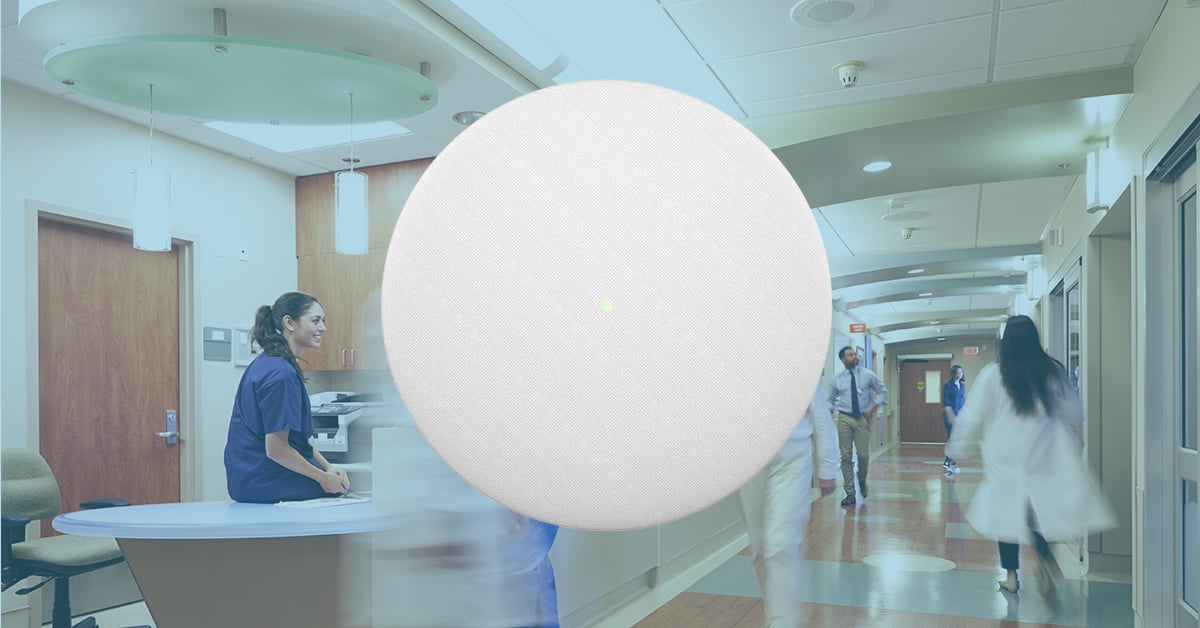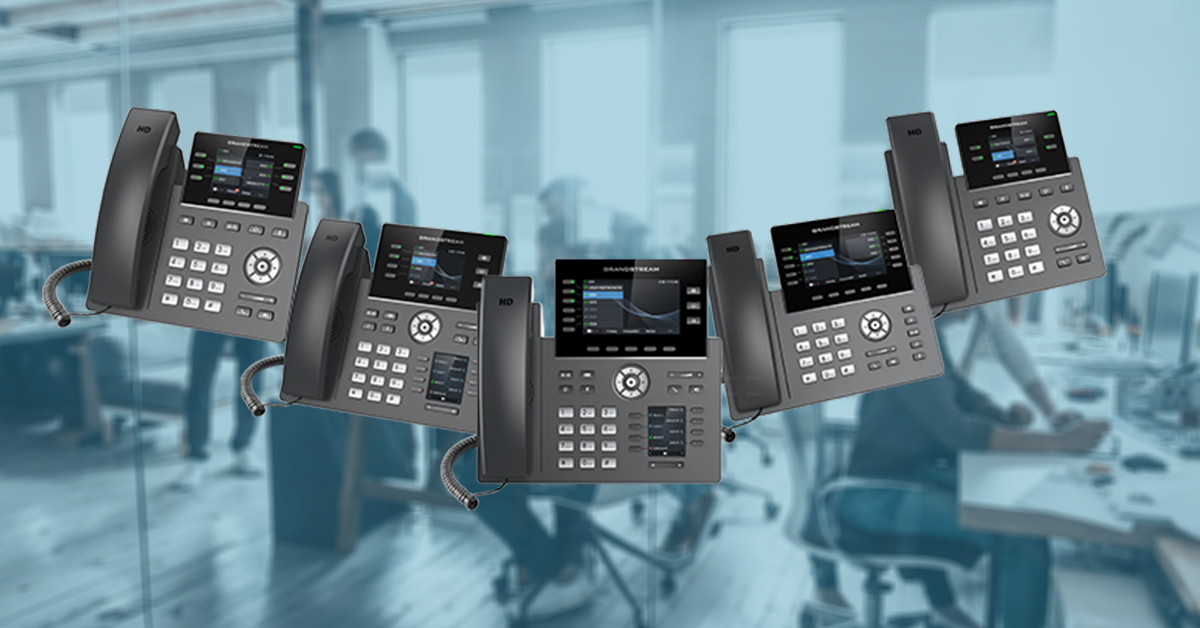Headsets, webcams, conferencing software, and other technology is a new focus for IT departments, individuals, and businesses alike. Remote work has always been a growing market, and due to the global pandemic businesses are adopting new remote work practices that are here to stay as companies recognize the growing benefits that remote work offers. In fact, since 2005 regular work-at-home positions among non-self-employed workers has grown by 173%, and Telecommuting in the US has seen a 115% increase in the past decade.1 In this blog post, we’ll cover the benefits and drawbacks that remote work offers to both employees and employers, and explain how remote work technology can boost these benefits and eliminate drawbacks.
-
Networking
-
-

 New Product: GWN7672Learn MoreOur most powerful Wi-Fi access point yet. Wi-Fi 7, 11Gbps, up to 384 concurrent client devices.
New Product: GWN7672Learn MoreOur most powerful Wi-Fi access point yet. Wi-Fi 7, 11Gbps, up to 384 concurrent client devices. Comprehensive Cloud ManagementLearn MoreConfigure, manage, and troubleshoot network deployments for free with the GDMS platform.
Comprehensive Cloud ManagementLearn MoreConfigure, manage, and troubleshoot network deployments for free with the GDMS platform.
 New Product: GWN7672Learn MoreOur most powerful Wi-Fi access point yet. Wi-Fi 7, 11Gbps, up to 384 concurrent client devices.
New Product: GWN7672Learn MoreOur most powerful Wi-Fi access point yet. Wi-Fi 7, 11Gbps, up to 384 concurrent client devices. Comprehensive Cloud ManagementLearn MoreConfigure, manage, and troubleshoot network deployments for free with the GDMS platform.AggregationLayer 3Layer 2 LiteSwitch Search Tool
Comprehensive Cloud ManagementLearn MoreConfigure, manage, and troubleshoot network deployments for free with the GDMS platform.AggregationLayer 3Layer 2 LiteSwitch Search Tool Indoor Wi-Fi Access PointsLearn MoreGrandstream's indoor Wi-Fi access points provide a wide range of solutions for customized wireless deployments.
Indoor Wi-Fi Access PointsLearn MoreGrandstream's indoor Wi-Fi access points provide a wide range of solutions for customized wireless deployments. Wi-Fi AP Search ToolLearn MoreSearch through our Wi-Fi access points, filter them by features, and compare devices all from one tool.
Wi-Fi AP Search ToolLearn MoreSearch through our Wi-Fi access points, filter them by features, and compare devices all from one tool. Outdoor Wi-Fi Access PointsLearn MoreGrandstream's outdoor Wi-Fi Access Points offer weatherproof certified casing and extended range.
Outdoor Wi-Fi Access PointsLearn MoreGrandstream's outdoor Wi-Fi Access Points offer weatherproof certified casing and extended range. Wi-Fi AP Search ToolLearn MoreSearch through our Wi-Fi access points, filter them by features, and compare devices all from one tool.
Wi-Fi AP Search ToolLearn MoreSearch through our Wi-Fi access points, filter them by features, and compare devices all from one tool. Grandstream Device Management SystemLearn MoreDeploy and manage full GWN solutions entirely from the cloud.
Grandstream Device Management SystemLearn MoreDeploy and manage full GWN solutions entirely from the cloud. GDMS Cloud ManagementLearn MoreGDMS Networking is a free enterprise-grade, management platform for Grandstream GWN series devices.
GDMS Cloud ManagementLearn MoreGDMS Networking is a free enterprise-grade, management platform for Grandstream GWN series devices. GWN Software ManagerLearn MoreGWN Manager is a free on-premise enterprise-grade management platform for Grandstream GWN series devices.
GWN Software ManagerLearn MoreGWN Manager is a free on-premise enterprise-grade management platform for Grandstream GWN series devices. Grandstream HomeLearn MoreGrandstream Home allows you to set up, control, and monitor GWN7062E/ET home networks from your mobile phone.
Grandstream HomeLearn MoreGrandstream Home allows you to set up, control, and monitor GWN7062E/ET home networks from your mobile phone.
-
-
Unified Communications
-
-


 New Product: SoftwareUCMLearn MoreA software-based PBX solution that provides a scalable collaboration platform.
New Product: SoftwareUCMLearn MoreA software-based PBX solution that provides a scalable collaboration platform.

 New Product: SoftwareUCMLearn MoreA software-based PBX solution that provides a scalable collaboration platform.On-Premise IP PBXsCloud PBXSoftware PBXHybrid IP PBX SolutionsCollaboration AppDesktop IP PhonesHotel IP PhonesCordless IP PhonesVideo IP PhonesAccessoriesFacility Management
New Product: SoftwareUCMLearn MoreA software-based PBX solution that provides a scalable collaboration platform.On-Premise IP PBXsCloud PBXSoftware PBXHybrid IP PBX SolutionsCollaboration AppDesktop IP PhonesHotel IP PhonesCordless IP PhonesVideo IP PhonesAccessoriesFacility Management ATAsLearn MoreOur ATAs are trusted and deployed by some of the largest service providers in the world.
ATAsLearn MoreOur ATAs are trusted and deployed by some of the largest service providers in the world. GatewaysLearn MoreIntegrate traditional phone systems into a VoIP network and efficiently manage communication costs.
GatewaysLearn MoreIntegrate traditional phone systems into a VoIP network and efficiently manage communication costs. Video ConferencingLearn MoreGrandstream has everything to create a powerful and affordable video conferencing solution.
Video ConferencingLearn MoreGrandstream has everything to create a powerful and affordable video conferencing solution. Audio ConferencingLearn MoreGrandstream's audio conferencing devices provide high-quality voice communication.
Audio ConferencingLearn MoreGrandstream's audio conferencing devices provide high-quality voice communication. WebcamsLearn MoreWebcams in the GUV series include a Full HD USB camera that enables high-quality audio and video collaboration.
WebcamsLearn MoreWebcams in the GUV series include a Full HD USB camera that enables high-quality audio and video collaboration.
-
-
Convergence
-
-
 GCC Convergence SolutionsLearn MoreAn extraordinary all-in-one solution that merges unified communications & networking into one platform.
GCC Convergence SolutionsLearn MoreAn extraordinary all-in-one solution that merges unified communications & networking into one platform.
 Get to Know the GCC SeriesLearn MoreIn this blog post, we cover the core capabilities and use-case scenarios of the GCC Series.
Get to Know the GCC SeriesLearn MoreIn this blog post, we cover the core capabilities and use-case scenarios of the GCC Series. GCC Convergence SolutionsLearn MoreAn extraordinary all-in-one solution that merges unified communications & networking into one platform.
GCC Convergence SolutionsLearn MoreAn extraordinary all-in-one solution that merges unified communications & networking into one platform.
 Get to Know the GCC SeriesLearn MoreIn this blog post, we cover the core capabilities and use-case scenarios of the GCC Series.
Get to Know the GCC SeriesLearn MoreIn this blog post, we cover the core capabilities and use-case scenarios of the GCC Series. GCC Convergence SolutionsLearn MoreAn extraordinary all-in-one solution that merges unified communications & networking into one platform.
GCC Convergence SolutionsLearn MoreAn extraordinary all-in-one solution that merges unified communications & networking into one platform.
 Get to Know the GCC SeriesLearn MoreIn this blog post, we cover the core capabilities and use-case scenarios of the GCC Series.
Get to Know the GCC SeriesLearn MoreIn this blog post, we cover the core capabilities and use-case scenarios of the GCC Series.
-
-
Cloud
-
-
 Grandstream Device Management SystemLearn MoreUse GDMS to provision, manage, monitor, and troubleshoot Grandstream products
Grandstream Device Management SystemLearn MoreUse GDMS to provision, manage, monitor, and troubleshoot Grandstream products CloudUCMLearn MoreCloudUCM is a cloud PBX that provides a scalable business communication and collaboration platform.
CloudUCMLearn MoreCloudUCM is a cloud PBX that provides a scalable business communication and collaboration platform. UCM RemoteConnectLearn MoreUCM RemoteConnect allows organizations to build a secure, easy-to-manage communications solution for remote workers and devices.
UCM RemoteConnectLearn MoreUCM RemoteConnect allows organizations to build a secure, easy-to-manage communications solution for remote workers and devices..webp?width=250&height=131&name=how-to-use-gdms-q1-2024%20(1).webp) GDMS Cloud ManagementLearn MoreGDMS Networking is a free enterprise-grade, management platform for Grandstream GWN series devices.
GDMS Cloud ManagementLearn MoreGDMS Networking is a free enterprise-grade, management platform for Grandstream GWN series devices. GCC Series PBX UpgradeLearn MoreLearn about the GCC’s PBX solution and the upgrades available to expand its capacity.
GCC Series PBX UpgradeLearn MoreLearn about the GCC’s PBX solution and the upgrades available to expand its capacity. GCC Series Firewall ServiceLearn MoreGrandstream’s Firewall Service provides regular updates and upgrades to ensure that your firewall is always utilizing the most current security protocols.
GCC Series Firewall ServiceLearn MoreGrandstream’s Firewall Service provides regular updates and upgrades to ensure that your firewall is always utilizing the most current security protocols.
-
-
Support
-
-
 Documentation CenterLearn MoreAccess helpful technical documentation and how-to guides about our products.
Documentation CenterLearn MoreAccess helpful technical documentation and how-to guides about our products. ToolsLearn MoreAccess helpful tools such as device discovery software, ringtone generators, demo GUIs, and more.
ToolsLearn MoreAccess helpful tools such as device discovery software, ringtone generators, demo GUIs, and more. Documentation CenterLearn MoreAccess helpful technical documentation and how-to guides about our products.
Documentation CenterLearn MoreAccess helpful technical documentation and how-to guides about our products. ToolsLearn MoreAccess helpful tools such as device discovery software, ringtone generators, demo GUIs, and more
ToolsLearn MoreAccess helpful tools such as device discovery software, ringtone generators, demo GUIs, and more Documentation CenterLearn MoreAccess helpful technical documentation and how-to guides about our products.
Documentation CenterLearn MoreAccess helpful technical documentation and how-to guides about our products. ToolsLearn MoreAccess helpful tools such as device discovery software, ringtone generators, demo GUIs, and more.
ToolsLearn MoreAccess helpful tools such as device discovery software, ringtone generators, demo GUIs, and more. Documentation CenterLearn MoreAccess helpful technical documentation and how-to guides about our products.
Documentation CenterLearn MoreAccess helpful technical documentation and how-to guides about our products. ToolsLearn MoreAccess helpful tools such as device discovery software, ringtone generators, demo GUIs, and more
ToolsLearn MoreAccess helpful tools such as device discovery software, ringtone generators, demo GUIs, and more Documentation CenterLearn MoreAccess helpful technical documentation and how-to guides about our products.
Documentation CenterLearn MoreAccess helpful technical documentation and how-to guides about our products. ToolsLearn MoreAccess helpful tools such as device discovery software, ringtone generators, demo GUIs, and more.
ToolsLearn MoreAccess helpful tools such as device discovery software, ringtone generators, demo GUIs, and more. Documentation CenterLearn MoreAccess helpful technical documentation and how-to guides about our products.
Documentation CenterLearn MoreAccess helpful technical documentation and how-to guides about our products. ToolsLearn MoreAccess helpful tools such as device discovery software, ringtone generators, demo GUIs, and more.
ToolsLearn MoreAccess helpful tools such as device discovery software, ringtone generators, demo GUIs, and more. Documentation CenterLearn MoreAccess helpful technical documentation and how-to guides about our products.
Documentation CenterLearn MoreAccess helpful technical documentation and how-to guides about our products. ToolsLearn MoreAccess helpful tools such as device discovery software, ringtone generators, demo GUIs, and more.
ToolsLearn MoreAccess helpful tools such as device discovery software, ringtone generators, demo GUIs, and more. Documentation CenterLearn MoreAccess helpful technical documentation and how-to guides about our products.
Documentation CenterLearn MoreAccess helpful technical documentation and how-to guides about our products. ToolsLearn MoreAccess helpful tools such as device discovery software, ringtone generators, demo GUIs, and more.
ToolsLearn MoreAccess helpful tools such as device discovery software, ringtone generators, demo GUIs, and more.
-
-
Learn
-
-



 Grandstream Releases Outdoor Wi-Fi 7 Access PointLearn Morea dual-band Wi-Fi 7 access point with IP66 weatherproof protection and a 350-meter range.
Grandstream Releases Outdoor Wi-Fi 7 Access PointLearn Morea dual-band Wi-Fi 7 access point with IP66 weatherproof protection and a 350-meter range. Grandstream Announces Layer 2 Lite 2.5-Gigabit SwitchesLearn MoreLayer 2 Lite Managed Switches equipped with 8 2.5-Gigabit Ethernet ports and 2 10-Gigabit SFP+ ports.
Grandstream Announces Layer 2 Lite 2.5-Gigabit SwitchesLearn MoreLayer 2 Lite Managed Switches equipped with 8 2.5-Gigabit Ethernet ports and 2 10-Gigabit SFP+ ports. Grandstream Releases Tri-Band Wi-Fi 7 Access PointLearn MoreThe GWN7670WM provides next-generation Wi-Fi 7 connectivity and is designed to be mounted in-wall.
Grandstream Releases Tri-Band Wi-Fi 7 Access PointLearn MoreThe GWN7670WM provides next-generation Wi-Fi 7 connectivity and is designed to be mounted in-wall.


 Grandstream AcademyLearn MoreCurrent training classes from Grandstream Networks and our partners around the world.
Grandstream AcademyLearn MoreCurrent training classes from Grandstream Networks and our partners around the world. Grandstream Learning CenterLearn MoreView our latest technical videos, download helpful guides, and more.
Grandstream Learning CenterLearn MoreView our latest technical videos, download helpful guides, and more.
 About GrandstreamPartners
About GrandstreamPartners Contact UsLearn MoreAre you interested in purchasing our products or becoming a Grandstream partner? Use our Contact Us form, and we will get in touch.
Contact UsLearn MoreAre you interested in purchasing our products or becoming a Grandstream partner? Use our Contact Us form, and we will get in touch.
-
Brian Van Meter, Marketing Manager
Recent Posts
The Growing Market for Remote Work Technology
Topics: Remote Workers
Remote collaboration and online meetings have become a standard way to work together across most industries as a result of the Covid-19 pandemic. Luckily, online meeting technology is readily-available to help teams come together and work with one another as if they were right there in person. Adapting to the new standard of work has proven to be a challenge for some teams however, and it’s important to practice strategies that keep everyone on-track. In this blog post, we’ll be covering the best practices and platform features that can keep your online meetings productive.
With the release of our WP810 cordless Wi-Fi IP phone, we wanted to revisit a popular blog of ours that evaluates the pros and cons that Wi-Fi has against traditional DECT solutions. The WP810 was designed to suit a variety of enterprises and vertical market applications at an affordable price point that competes with most DECT offerings. Continue reading to learn how Wi-Fi voice is changing the shape of UC mobility.
Topics: Wi-Fi
Wi-Fi is a Natural Addition to VoIP Deployments
If you deploy VoIP solutions, you’re used to creating customized networks to help customers users communicate, be more productive, and work more efficiently. Recently, companies around the world have also started to utilize Wi-Fi technology more and more to achieve this same goal. In fact, in their recent 2019 annual report, Spiceworks found that 70% of surveyed organizations are expecting to utilize gigabit Wi-Fi technology by the year 20211. If you're use to deploying VoIP, Wi-Fi is a natural addition to add to your offering – and one that your customers will soon be looking for. In this blog post, we’ll go over some of the crossovers and similarities between Wi-Fi and VoIP and why you should add Wi-Fi networking to your offering.
Topics: Wi-Fi
4 Tips for a School's Inbound Call Strategy
Deploying K-12 Communication Networks
A communication network is one of the most vital pieces of infrastructure for any educational institution. Parents, teachers, administration, and sometimes even students rely on this network to stay informed and productive. A school’s wide range of users makes the network more complex when compared to others. It’s important to create an inbound call strategy prior to deploying a unified communications solution to ensure that the communication process is easy and streamlined for everyone involved. Continue reading to learn 4 tips that will help you create an inbound strategy that is perfect for parents, staff, and students alike.
Topics: IP communications, VoIP trends, Voice over IP, Vertical Markets
How one feature enhances facility communications
Education campuses, hotels, commercial buildings, hospitals, and large office complexes are all able to streamline communications and security by paging an entire network or group of devices. Adding an intercom or paging solution to your deployment enables users to take advantage of facility-wide communications. However, sometimes this paging system is used by multiple departments and users. This high demand on the paging system could cause critical pages to be delayed or go completely unheard. Multicast paging helps solve this dilemma.
Topics: SIP Intercom Solutions
How to Plan Your First IP Communications Solution
You’ve done your research and you’re going to install an IP communication solution. Whether you are doing it for your own business or looking to get into the installation business, it’s critical to go into any tech deployment with a plan and structure. Complications during a deployment almost always come from a lack of vision and detail during the planning stage. Whether it is your first deployment or one thousandth, following these set-up steps will help ensure you build the perfect deployment on the first try.
Topics: VoIP, Unified Communications
The Upcoming GSC3510 SIP Intercom Speaker and Microphone
SIP intercoms offer two-way voice functionality that empower offices, commercial spaces, schools, hospitals, apartments, and more with a voice intercom solution that expands security and communication capabilities. Our upcoming GSC3510 is a two-way SIP intercom speaker and microphone that comes feature-rich at an affordable price point, expanding our portfolio for resellers and installers. In this blog post, you’ll learn about the GSC3510’s technical specifications, key features, and example deployment scenarios.
Our new generation of IP phones, the GRP2600 Carrier-Grade series, has raised a lot of excitement. We've recently released the GRP2616 to this series and continue to build out the line's diversity. With a new line of products comes a lot of questions about features, capabilities, design, and technical specs. In this blog post I’ll answer frequently asked questions and provide some insight about this powerful series of IP phones. Read on to learn more.
Topics: VoIP endpoints, IP phones, Voice over IP, GRP2600
Companies around the world are embracing a new type of workspace when designing their offices, hybrid and mobile friendly. This isn’t a surprise, as recent studies show that employees are spending 50-60%¹ of their time at the office away from their desk. Companies and organizations are looking for unified communication solutions that not only support their workforce communications, but also its mobility. Because of this, it’s important that you stay up-to-date on the current state of IP devices on the market that support this freedom of movement within an organization. Two of the most common solutions out there are DECT and WiFi Voice, lets go over the pros and cons of both.
Topics: DECT, WiFi voice
Subscribe Here!
Recent Posts
Post by Topic
- 5G (1)
- 802.11ac (3)
- Access Points (5)
- advantages of VoIP (2)
- Analog Network (2)
- analytics (1)
- analyzing data (1)
- artificial intelligence (1)
- ATA (1)
- Awards (1)
- backup solution (1)
- Best Practices (8)
- big data (2)
- Business (2)
- Business Communication (4)
- business mobility (1)
- business strategy (2)
- business voice (3)
- BYOD (2)
- call center (2)
- Captive Portal (1)
- Case Studies (4)
- Choosing an IP PBX (1)
- Cloud Management Platform (3)
- cloud provisioning (1)
- Cloud Services (9)
- cloud video conferencing (2)
- CloudUCM (1)
- collaboration (11)
- Controllerless (1)
- CRM (2)
- DECT (6)
- DECT cordless (2)
- DECT IP phones (2)
- DECT solutions (2)
- Deployment Scenarios (1)
- DP722 (2)
- DP730 (2)
- e-commerce (1)
- emerging 2018 technology trends (1)
- enterprise (1)
- enterprise communications (2)
- Facility Access (6)
- facility management (1)
- failover solution (2)
- Firmware (1)
- future of SIP (1)
- future of technology (1)
- future of VoIP (3)
- GDMS (3)
- GDS3705 (1)
- GDS3710 (3)
- Grandstream (1)
- Grandstream Solution (11)
- growing trends (3)
- GRP2600 (2)
- GSC3510 (1)
- GUV Series (3)
- GUV3050 (1)
- GUV3100 (2)
- GVC (1)
- GWN (10)
- GWN Series (3)
- GXP Phones (5)
- GXV Phones (5)
- GXW (1)
- HA100 (1)
- healthcare industry (3)
- hospitality communication solutions (2)
- hotel communication (2)
- hotel management (1)
- hotel voip system (1)
- Huddle Rooms (1)
- Hybrid Networks (2)
- hybrid video conferencing (2)
- hybrid workplace (1)
- integration (1)
- internet (2)
- internet of things (2)
- IoT (2)
- IP communication myths busted (1)
- IP communications (5)
- IP PBX (7)
- IP phones (3)
- IP security (2)
- IP Surveillance (8)
- IP Video (6)
- IP Voice (11)
- IPVideoTalk (4)
- Kari's Law (1)
- Marketing (2)
- Marketing Advice (2)
- marketing strategy (1)
- mesh (1)
- MIMO (2)
- mobile device integration (2)
- mobile video conferencing (4)
- mobility (6)
- most influential VoIP trends (1)
- myths about VoIP (1)
- Networking (13)
- OKC WiFi (1)
- On-premise (1)
- online meetings (3)
- Personal Collaboration Devices (3)
- Platform Consolidation (1)
- PMK caching (1)
- Product Integration (2)
- productivity (2)
- property management systems (2)
- QoS (2)
- Ray Baum's Act (1)
- Reflection (1)
- remote education (3)
- remote work (4)
- Remote Workers (12)
- router (1)
- Security (13)
- security and facility access (3)
- Service Providers (3)
- SIP (3)
- SIP endpoints (2)
- SIP Intercom Solutions (2)
- SIP messaging (1)
- smart office (3)
- Social media (2)
- Solutions (4)
- Success (1)
- Technical Review (1)
- telecommunications (2)
- Telehealth (2)
- telemedicine (1)
- tips (3)
- topology (1)
- travel industry (1)
- UCM (3)
- UCM RemoteConnect (3)
- UCM series IP PBXs (6)
- UCM6300 (2)
- UCM6300 Ecosystem (5)
- UCM6510 (1)
- Unified Communications (36)
- upgrading to VoIP (1)
- VC (3)
- Vertical Markets (4)
- Video (3)
- video communications (6)
- Video Conferencing (24)
- Video Phones (2)
- Voice network (2)
- Voice over IP (6)
- VoIP (22)
- VoIP endpoints (3)
- VoIP messaging (1)
- VoIP mobile (2)
- voip network (5)
- VoIP trends (5)
- VPN (2)
- warehouse (1)
- Wave (2)
- Wave 2 (2)
- Wave Web App (1)
- web meetings (5)
- webinars (1)
- Wi-Fi (10)
- Wi-Fi Marketing (1)
- Wi-Fi Networking (1)
- WiFi (11)
- WiFi Acess Points (6)
- WiFi APs (2)
- WiFi IP Phone (4)
- WiFi Phone (4)
- WiFi voice (4)
- WiFi Voice Enterprise (1)
- WiFi voice network (3)
- WiFi voice networks (1)
- Wireless (3)
- work from home (1)
- wp820 (2)









